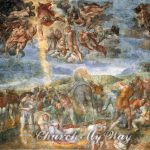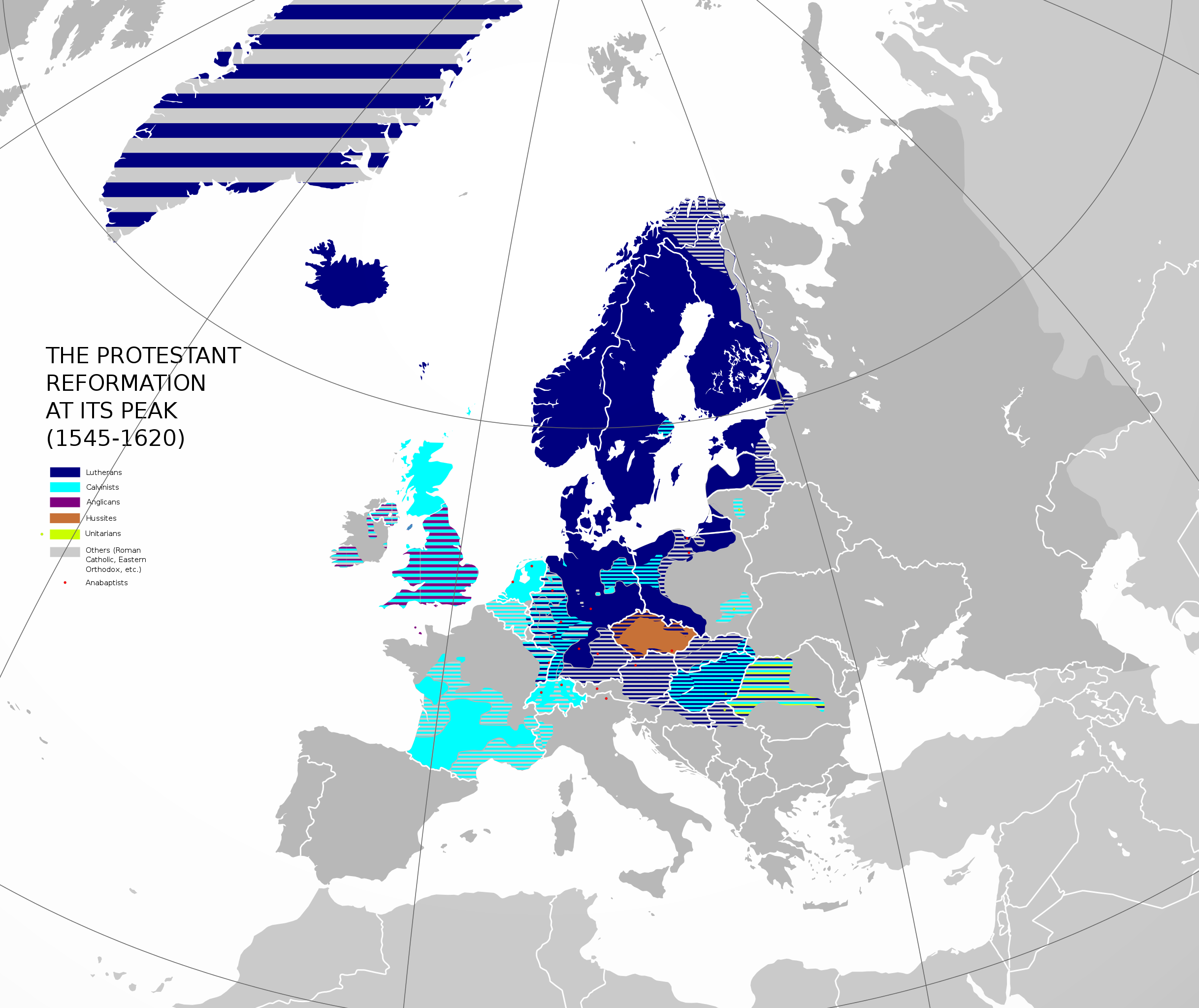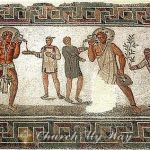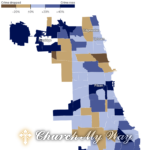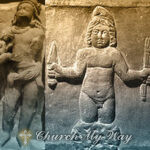The Amazing History of Christianity: An Analysis of the Challenges it Faced in the 21st Century
Christianity is a religion based on the teachings of Jesus Christ. It is the world’s largest religion with over 1.2 billion followers worldwide. Christianity began in the 1st century AD and its early history is often divided into three phases:
– The Apostolic Age (AD 1–100) when the first apostles preached the gospel and established the Church;
– The Ante-Nicene Period (100–325) when Christianity spread throughout the Mediterranean world and became increasingly popular; and
– The Post-Nicene Period (325–present) was when Christianity further expanded and saw various splits within the Church.
Today Christians face many challenges in the 21st century. These include secularization declining membership and theological disagreements. In addition, Christians have been persecuted in many parts of the world, particularly in countries where Islam is the dominant religion.

Christianity is a major world religion that has been in existence for approximately 2,000 years. Christianity is based on the teachings of Jesus Christ and his apostles, who lived in the 1st and 2nd centuries AD. The religion has faced many challenges over its long history, including persecution and opposition from other religions.
Some of the major events in Christianity’s history include:
-The conversion of Emperor Constantine to Christianity
-The Crusades
-The Protestant Reformation
-Persecution during World War II
Christianity is a monotheistic Abrahamic religion that originated in the Middle East and spread to Europe, Africa, and Asia. Christianity has been criticized for its belief in the Trinity (Father, Son, Holy Spirit), for its teaching of original sin, for its teaching of Jesus as the only way to salvation, and for its teaching that Jesus was resurrected from death.
The Rise of Christianity
Christianity is one of the world’s largest religions. With more than 2 billion followers, it is the most widespread religion in the world. It also has a rich history that dates back to nearly two thousand years ago.
The word Christianity comes from Christos, which means “anointed one” and was first used to describe Jesus of Nazareth, who lived in the 1st century AD. He has considered the founder of Christianity and his teachings are at the core of Christian beliefs.
Christianity’s origins can be traced back to Roman-occupied Judea where it began as a sect within Judaism and later became an independent religion following its split with Judaism around 50 AD. The split was mainly caused by disputes over whether Jesus was divine or not and if he should be worshipped as God. Christianity is centered on the concept of salvation, the idea that people could become “saved” and go to heaven after death. The idea of heaven was further popularized in Christian writings through several chronicles detailing visions, including Revelations and the Apocalypse. There are a variety of Christian denominations, the most significant ones being Catholics and Protestants.
The Fall of the Roman Empire and Rise of Islam
The Roman Empire was one of the most powerful empires in history. It had a vast territory that spanned from Britain to North Africa, and it had a population of around 50 million people. But, after centuries of prosperity, Rome began to decline. The empire’s problems were many and varied, but they were finally undone by a combination of factors:
– The rise of Christianity in the 3rd century AD
– The invasion and conquest by Germanic tribes
– A pandemic that killed an estimated one-third to one-half of the population
– Economic stagnation due to reliance on slave labor
In this section, we will be looking at some challenges faced by the Roman empire as well as its fall and rise with Islam.
The Crusades and Controversies That Surrounded Them
The Crusades were a series of military campaigns waged by the Christians of Europe and their allies in the Holy Land, against Muslim forces. The Crusades were launched in 1095 by Pope Urban II, who called for a war to liberate Jerusalem from Muslim rule.
The Crusades were controversial because they involved violence and forced conversion to Christianity. They also had an enormous economic cost. Muslims saw them as an attempt to take over the Holy Land and Muslim lands in general, while Christians saw them as a holy duty to spread their faith.
Reformation and Counter-Reformation in Europe in the 16th Century
The Reformation and Counter-Reformation in Europe had a profound effect on the history of Europe. The Reformation and Counter-Reformation emerged in the early 16th century as a result of challenges to the authority of the Roman Catholic Church by Martin Luther, John Calvin, Jean Calvin, Huldrych Zwingli, and other theologians. This movement was primarily confined to Germany, England, and Switzerland. The Reformation reestablished religious freedom, while the Counter-Reformation attempted to sustain catholicism.
The Protestant Reformation was a 16th-century movement against what its followers considered to be errors in the Catholic Church that emphasized justification by faith alone through Christ’s death on the cross rather than good works, including a rejection of clerical celibacy and aspiration of the laity, which was held to be a denial of Christ’s promise that his disciples would rule over the world. The German Peasants’ War (1524–26) was an important precursor movement in Europe.
In Germany, it is referred to as the Schmalkaldic War or Schmalkalden Rebellion after its most notable leader, the Lutheran preacher Martin Luther. In 1517, Charles I of Spain (1500–1558) became King Charles of Hungary and Bohemia when his mother Juana was forced to abdicate as Holy Roman Empress by her son Ferdinand I of Habsburg. The Protestant Reformation was a 16th-century movement against what its followers considered to be errors in the Roman Catholic Church, which led to a division of Christianity into two main branches: the Catholic Church and the various Protestant churches.
The German Peasants’ War was a widespread popular revolt in 1524–1525 led by Franz von Sickingen against those feudal lords and princes who had conspired to prevent their constituents from enjoying the right to convene in the Imperial Diet. The Protestant Reformation was a 16th-century movement against what its followers considered to be errors in the Roman Catholic Church, which led to a division of Christianity into two main branches: the Catholic Church and the various Protestant churches.
The early Christians faced many challenges in spreading Christianity. One of the main challenges was persecution from the Roman authorities. Christians were often arrested and imprisoned and many were killed for their beliefs. Another challenge was that most people in the Roman Empire were polytheistic and they did not understand or accept the Christian message of monotheism. In addition, Christian beliefs were often seen as strange or even dangerous by those outside the faith.
What were some of the challenges faced in spreading Christianity?
Christianity was largely spread by missionaries. Missionaries are people who go to foreign countries to spread their religion. In the early days of Christianity, missionaries were often treated poorly. They were often beaten and killed. However, they continued to go because they believed in their religion. As Christianity became more popular missionaries were able to spread the religion more easily. They built churches and helped people learn about the religion. Today missionaries continue to go to new places to spread Christianity.
The Rise of Christianity
The Rise of Christianity began in the Roman Empire during the reign of Emperor Constantine. Christianity had been a minor religion in the empire but Constantine’s conversion to the faith and his subsequent support for it led to its spread throughout the empire. By the end of the 4th century, Christianity was the official religion of the empire.
The rise of Christianity was a gradual process and several factors contributed to its spread. One was Constantine’s conversion to the faith which made him a powerful patron of the Church. Another was the Edict of Milan which granted official status to Christianity and toleration for its practice. The rise of monasticism also played a role as monks and nuns became missionaries who spread Christianity to new areas. Finally, the fall of the Western Roman Empire led to the rise of Christianity in the Germanic kingdoms that replaced it.
The Fall of the Roman Empire and Rise of Islam
The Roman Empire fell in 476 AD after being overrun by the Germanic tribal armies of the Visigoths. This ushered in a period of instability and ushered in the Dark Ages. Islam rose to prominence in the 7th century after the Arab Muslim armies conquered much of the Middle East North Africa and Spain. Islam continued to expand throughout the centuries becoming a major force in world affairs. In the West, the Renaissance began in the 14th century marking a return to the values of classical antiquity.
This was followed by the Age of Exploration which began in the 15th century and saw European sailors venture out into the world in search of new lands and riches. The Reformation began in the 16th century and led to the formation of Protestantism. The Scientific Revolution began in the 17th century and ushered in an era of great scientific and technological advances. The 18th century was dominated by the Enlightenment which saw a rise in secularism and the beginning of the Industrial Revolution.
The 19th century saw the Napoleonic Wars the rise of nationalism and the unification of much of Europe. The 20th century was marked by two world wars the rise of communism and the beginning of the nuclear age.
The Crusades and Controversies That Surrounded Them
The Crusades were a series of religious wars fought by Christian armies to retake the holy land of Jerusalem from Muslim control. Controversies surrounding the Crusades include whether or not they were motivated by religious fervor or political opportunism as well as the brutal tactics used by both sides during the conflict. The Crusades had a profound impact on the development of western civilization and their legacy is still felt in the modern world.
The Crusades were a series of military campaigns waged by Christian European armies against Muslim forces in the Holy Land of North Africa and the eastern Mediterranean. The primary goal of the Crusades was to recapture the Holy Land from Muslim rule and to protect Christians living in the region. Over several centuries several different crusading armies were formed and dispatched to the Holy Land. These armies were often poorly equipped and poorly trained and they frequently suffered devastating defeats at the hands of the Muslim forces they were trying to defeat.
Despite this, the Crusades had a significant impact on the development of western civilization. They introduced Europeans to the Islamic world and the cultures of the Middle East and they played a role in the spread of Christianity. The Crusades also had a profound effect on the development of Medieval warfare and they contributed to the decline of feudalism in Europe.
Reformation and Counter-Reformation in Europe in the 16th Century
The Reformation was a 16th-century religious and political movement that resulted in the reform of the Christian church. It began in Germany with the publication of Martin Luther’s 95 Theses which critiqued the practices of the Catholic Church. The movement gained momentum after Luther was excommunicated from the Catholic Church and formed his Protestant sect the Lutheran Church. The Reformation spread throughout Europe causing many people to convert to Protestantism.
In response to the Reformation, the Catholic Church embarked on a Counter-Reformation to re-assert its power and influence. This led to increased religious tensions and conflict culminating in a series of bloody wars known as the Wars of Religion.
What were some of the methods used to spread Christianity?
The methods used to spread Christianity were varied and included things such as:
– using the existing infrastructure of the Roman Empire to transport missionaries and other Christian officials
– building new churches and monasteries in areas that had not yet been Christianized
– sending out missionaries to convert people to Christianity
– holding debates with representatives of other religions
– writing treatises and books about Christianity
Who were some of the key figures in the spread of Christianity?
Christianity spread from the Middle East to the rest of the world in three waves. The first wave was when Christianity was adopted by Roman Emperor Constantine I and became a legal religion. The second wave was when Christianity spread to Northern Europe through missionary work by Irish monks. The third wave was when Christianity spread to Southern Europe, Africa, and Asia through trade routes.
Some of the key figures for Christianity spread were Constantine I, St Patrick, Pope Gregory I, and Francis Xavier. Constantine I was the first emperor of Rome to convert to Christianity. He became a Christian in 312 and quickly put an end to the persecution of Christians in Rome. This eased the spread of Christianity throughout his empire, which then grew greatly under his successors.
St Patrick was a Roman British Christian missionary who converted Ireland’s pagan population during the 5th century. He is the patron saint of Ireland and its diocese of Armagh. St Patrick was born in Roman Britain around 390 AD into a wealthy Romano-British family, educated as a child in Latin and Christian theology. After some years as a catechumen, he traveled to the continent and enrolled in the Irish monastic school at Auxerre, where he received instruction in the Latin language.
He returned to Britain around 432 or 433 and worked as a missionary, initially preaching in southwestern Gaul. In 442, he was ordained as a bishop. He was granted silver tablets that contained the gospel message he had written for his followers and inscribed with his name; these remain the oldest surviving document in Irish history.
Read more: How did Christianity spread globally?
Reference: Wikipedia

